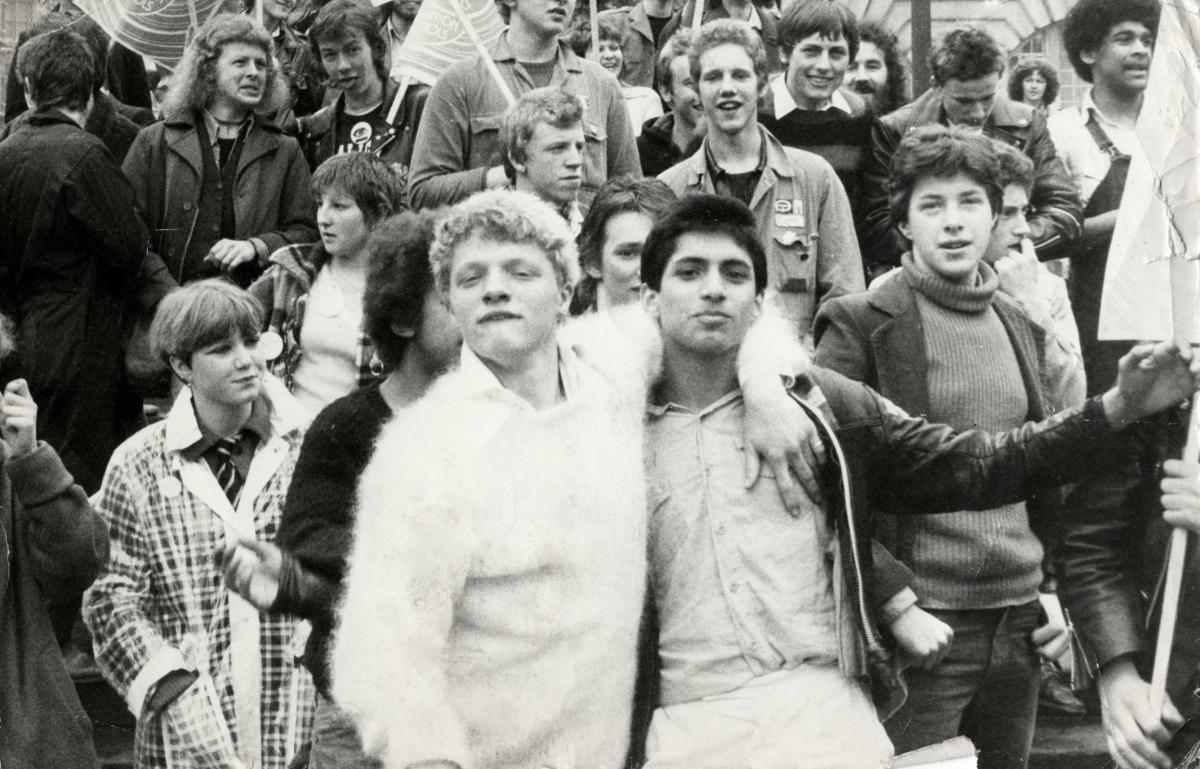A new exhibition honors Bradford’s youth culture from the 1970s and 1980s, spanning from punks to “soulies.”
Being Young in Bradford is based on the experiences of six individuals who were born and raised in the area throughout the thriving musical periods of the past. Punk, Bradford bands, DJs for sound systems, scooters, and Northern Soul memorabilia are all on show.
The Being Bradford collective and Bradford Council’s Museums and Galleries service collaborated on the show. Originally slated to take place in Cartwright Hall, the exhibition is currently available online and features social media-shared images, videos, and blogs. Posters are encouraged to share their personal recollections of growing up in the district as teenagers, beginning with those who lived through the 1970s and 1980s.
The original six contributors to the exhibition—Johna, Anthony, Gary, Nagbea, Derek, and Steve—have all written blogs and put together soundtracks that reflect their formative years. Additional input was provided by Aki, who was among the initial Asian punks in the area.
Johna describes how punk rock altered his life. In 1977, he witnessed the Sex Pistols twice in one week. The second encounter happened at Ivanhoe’s in Huddersfield, which he and his companion walked there from Bradford. Malcolm McLaren, manager of Sex Pistols, allowed them entry despite the fact that it was sold out when they arrived after three hours of travel.
Anthony remembers seeing the term “black” used negatively when he first moved here as a child. He became active in Bradford’s punk scene, singing with bands such Angelic Upstarts and later reggae band Amazulu, which performed on the Pyramid Stage at Glastonbury and supported David Bowie.
Gary talks about his time spent working at Bradford’s radical Fourth Ideal Bookshop and founding the 1 in 12 Club, which at the time had over 1,000 members and arranged benefit performances, festivals, and compilation records. The group “was founded in an environment of mutual aid and self management and collectively run with a strict no racist, sexist, or homophobic policy,” according to Gary. It is 40 years old next year.
Nagbea remembers going to discos at the Mecca and seeing the house band perform on a rotating stage. He quit his job at a mill to play in Bradford’s first, and maybe only, black punk/new wave band, Reflex Action. They performed in Queen’s Hall with New Model Army and Rock Against Racism. Early in the 1980s, Nagbea signed a record contract with The Word, which performed at benefit shows for the miners’ strike at the 1in12. On the pirate radio station WKLR, he was the host of the Black Agenda Show. He writes of places “where people got together to enjoy food, music, and community” and the African Caribbean community in the area. He also recalls Bradford’s first sound system, Conquering Lion.
Derek grew up in the suedehead and ‘Boot Boys’ era. He talks of meeting at The Queen’s Hotel before Bradford City home games, where his group were known as ‘townies’, and nights out at the Norfolk Bar, frequented by ‘soulies’. It wasn’t long, says Derek, before lifelong friendships were formed with ‘townies’ and ‘soulies’. Late 1974 at The Queen’s he heard Why Can’t We Live Together by Timmy Thomas on the jukebox. It was the start of Derek’s lifelong love of Northern Soul.
Steve got into scooters by accident – his first cost £30 and was, he says, the best £30 he ever spent. He became a bus conductor aged 18 and went to the Queen’s Hotel after shifts, where he metscooter riders who were into Northern Soul. They created a scooter club called the Night Owls, heading off to Northern Soul all-nighters. They later got into the Mod scene and made use of the city’s secondhand shops, especially Sykes’s Wardrobe.
One of the original Asian Scooter Boys/Mods in the district was Abby. After falling in love with scooters one weekend, he made it his way of life. He claims that he was welcomed “as someone who belonged.”
When punk arrived, Aki remembers his family’s house “erupting like a volcano.” Together with his brother, he disregarded their Muslim culture by donning safety pins, torn trousers, and hair dye. When Aki joined Southern Death Cult, there weren’t any Asian punk bands active at the time. He remembers, “Within months we were the hottest property in the music business.”
Val tells of how she didn’t fit in until she was part of Bradford’s punk community and went to gigs by the likes of Adam and the Ants, The Negatives, The Damned, The Stranglers.
Ian Beesley was a hippy before getting into rock. After leaving school he worked at Esholt sewage works where he began to take photos of colleagues. With their encouragement, he went to Bradford Art College. Today he’s an award-winning, internationally acclaimed photographer.
Councillor Sarah Ferriby, Bradford Council’s Executive Member for Healthy People and Places, said: “This is a fascinating exhibition taking us on the journey of the lives of a diverse bunch of people who grew up in the Bradford district during the 1970s and 1980s. It shows how the powerful music scenes of the time shaped their lives and influenced them.
“Due to the ongoing Covid-19 pandemic we’ve again had to close our museums, but it doesn’t mean that we can’t share this exhibition online through the photographs.”
* Did you grow up here in the 1970s and 80s? Share memories @BradfordMuseums Facebook page, using #BYiB, email to rsvpcartwrighthall@bradford.gov.uk. Visit bradfordmuseums.org
To contribute a spoken recollection email byib@bcbradio.co.uk











